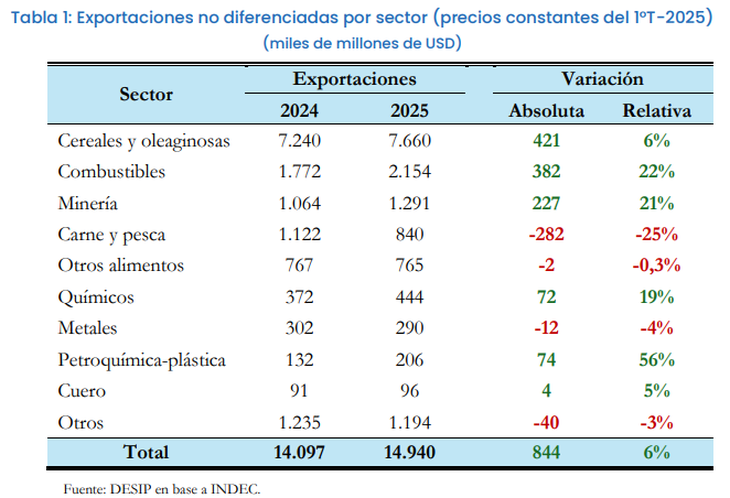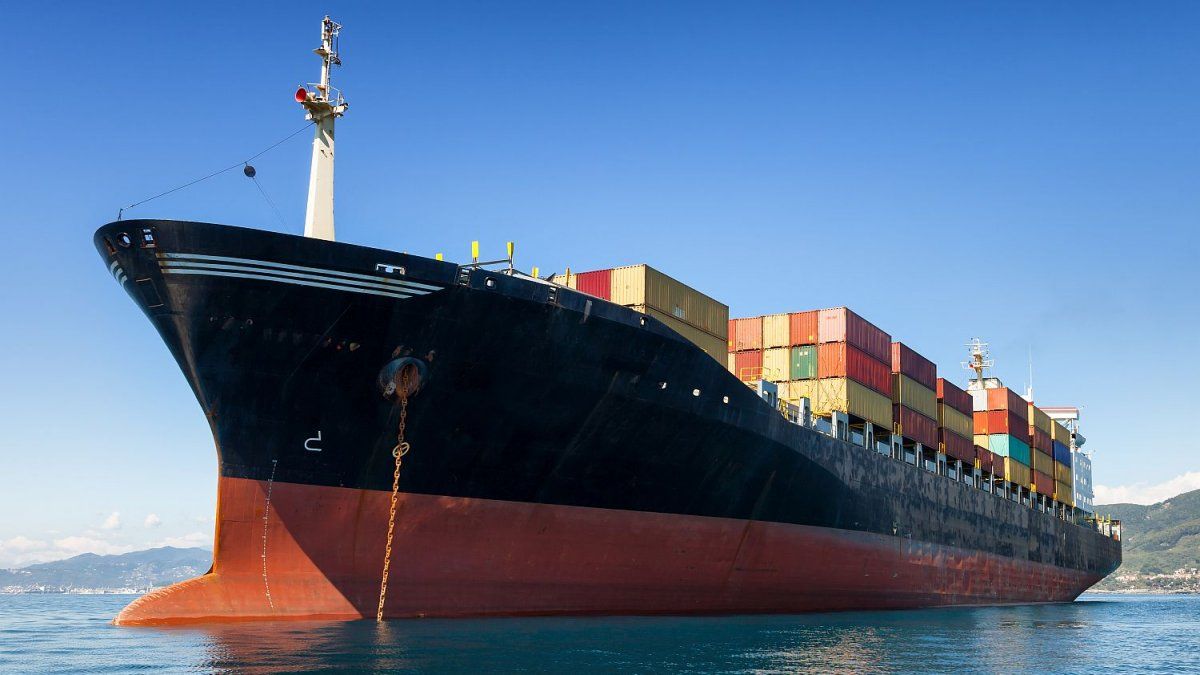This was shown by a new report published by the Interdisciplinary Institute of Political Economics (Iiep) from the University of Buenos Aires (UBA). The work exhibited that, between January and March, Argentine exports registered an interannual growth of 6.5% in real terms (that is, without taking into account the effect of international price variation).
In addition, Shipments to other countries were 3% higher than those of the first quarter 2008, the previous peak. However, this increase was explained almost entirely due to dynamics in primary products (+30%) and fuels (+26%).
Exports of added assets were collapsed in the last two decades
On the contrary, in manufactures of agricultural origin, the progress since then was much lower (+1.6%), while In manufactures of industrial origin (MOI) a strong collapse (-19%) was verified. The coordinator of the Argentine Quarterly Export Report (ITEA) of the IIEP, Federico Berninihe pointed to Scope That the decline during this period was widespread, although, due to its relevance in the sales basket, the casualties in the automotive complex, chemicals and metalworking products highlighted.
From the IIEP they clarify that the MOI are not necessarily synonymous with products with greater added value, although they are a good approach. In order to improve the classification that INDEC usually uses, the UBA institute segments exports “according to its degree of differentiation (by physical characteristics, design, brand or reliability) in the understanding that A composition of exports with greater participation of differentiated goods reflects a more sophisticated export structure, with greater possibilities of generating spills of knowledge and greater perspectives of future growth“
image.png
Compared to the first quarter of last year, sales of “non -differentiated” goods, which mostly include commodities, grew 6% (+US $ 844 million) At constant prices. Between cereals and oleaginous (tractioned by soybeans), fuels (for oil) and mining (driven by gold and lithium) contributed US $ 1,030 million more than in 2024, damping figure in large part for a decrease of US $ 282 million in the meat and fishing segment.
image.png

For its part, Exports of “differentiated” goods improved 4% year -on -year (+U $ S147 million). The increase was mostly generated by pharmaceutical products and differentiated meats (the one that is exported in adapted containers for the final consumer). “When observing the performance of the meat sector as a whole, these increases failed to compensate for falls in the products not differentiated from this sector,” the report said.
image.png

In addition, sales of differentiated goods They were still below 2023so the year -on -year rise must be taken with caution when drawing conclusions, since part of a comparison base that included a very recessive quarter and difficulties in accessing imported inputs.
The little diversification of exports involves development
The IIEP came from highlighting in previous reports that in the accumulated of 2024 the differentiated goods maintained the dynamics of stagnation of the last decade. “This stagnation reflects the Lack of dynamism in the diversification of the Argentine export basket” and “Denotes the process of primarization of exports“said the report in question.
Bernini argues that, “to the extent that Vaca Muerta explodes and mining, the primarization of exports will continue in the coming years,” but warned that “The important thing is that differentiated exports do not fall but accompany growth to give development to that growth“
In the face of this objective, the economist celebrated the greatest macroeconomic stability, the credit boom and the measures aimed at facilitating trade to companies, but added that A more active role in the State is needed in “quality promotion policies, design and management in employee training incentives”.
“There must not necessarily be a selection of sectors in the sense of playing it at all for a sector. But promoting these policies you have the potential to add a lot to the risk of being wrong (different from tax incentives such as those of Tierra del Fuego or those of the knowledge economy that are difficult to get), “he deepened.
Source: Ambito




